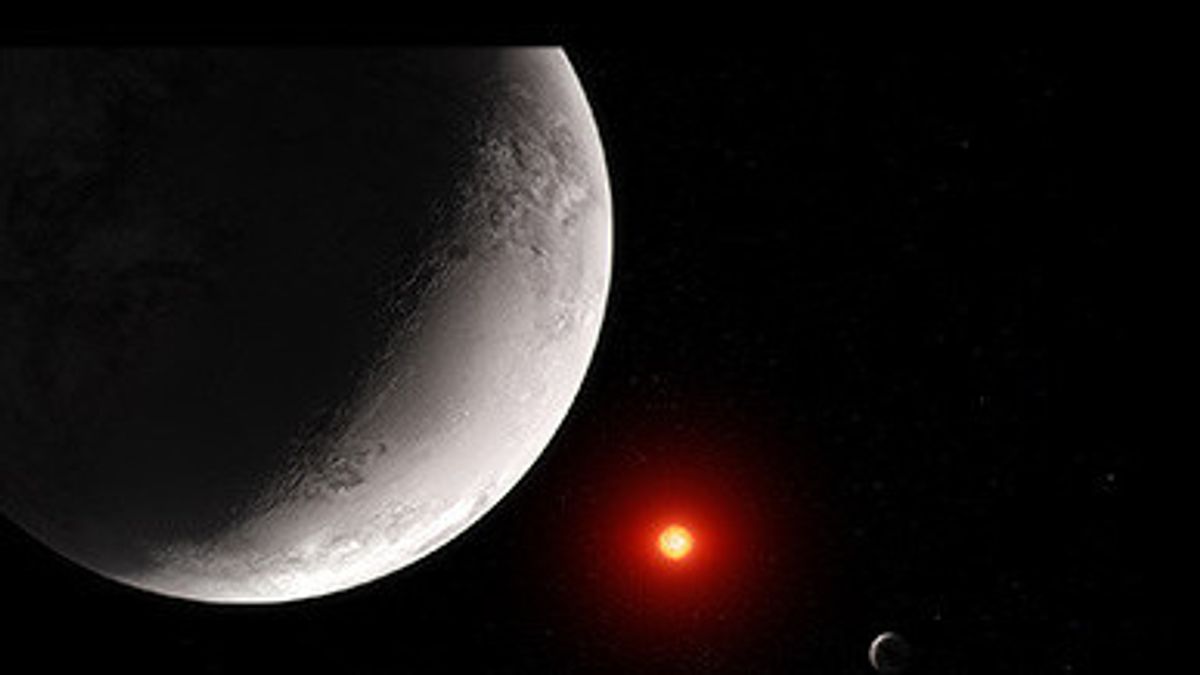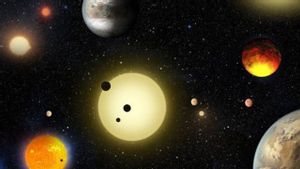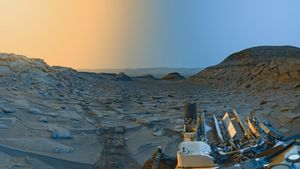JAKARTA - NASA's James Webb Space Telescope has managed to measure the heat emanating from the TRAPPIST-1 c, an exoplanet.
TRAPPIST-1 c, orbiting a red dwarf star 40 light years from Earth with a daytime temperature of about 225 degrees Fahrenheit.
The planet is a rocky planet once characterized by thermal emission. It has a size and mass roughly exactly with Venus and received the same amount of radiation from its star.
An international research team used the Webb Telescope to calculate the amount of heat energy coming from the TRAPPIST-1 c.
The goal, in an effort to determine whether the planet's atmosphere can survive in the harsh environment of red dwarf stars. The results show the planet's atmosphere is very thin and may form with little water.
"We want to know whether rocky planets have atmospheres or not. In the past, we could only study planets with thick, hydrogen-rich atmospheres. With Webb finally we can start looking for atmospheres dominated by oxygen, nitrogen and carbon dioxide," said the first author of the paper published today in Nature, Sebastian Zieba, quoted Tuesday, June 20.
The team used the MIRI (Mid-Infrared Instrument) belonging to the Webb Telescope to observe the TRAPPIST-1 system on four separate occasions as the planet moves behind the star, a phenomenon known as a secondary eclipse.
By comparing the brightness when the planet is behind the star (only light) along with the brightness as the planet is next to the star (light from a combined star and planet), the team can calculate the number of mid-infrared light with a wavelength of 15 microns released during the day of the planet.
The amount of infrared-middle light emitted by a planet is directly related to its temperature, which in turn is influenced by the atmosphere.
The carbon dioxide gas specifically absorbs 15 microns of light, making the planet appear fainter at that wavelength. However, clouds can reflect light, making the planet appear brighter and covering up carbon dioxide.
In addition, a substantial atmosphere of any composition will redistribute heat from day to night, causing the day's temperature to be lower than without atmosphere.
VOIR éGALEMENT:
The data also shows that it is unlikely that the planet is a true Venus analogous to thick CO2 atmospheres and sulfuric acid clouds.
The absence of a thick atmosphere suggests the planet may have formed with relatively little water. If the TRAPPIST-1 is cooler and climateline is forming under the same conditions, they may also start with a little water and other components needed to make planets habitable.
The sensitivity needed to distinguish between the various atmospheric scenarios on the smallest planet is remarkable. The decrease in brightness detected by the Webb Telescope during the secondary eclipse was only 0.04 percent, equivalent to seeing 10,000 small lamplights and displaying only four went out.
Following this study, the team will conduct further investigations to observe the full orbits of TRAPPIST-1 b and TRAPPIST-1 c. In order to see how temperatures change from day to night from both planets and will provide further restrictions on whether they have atmospheres or not.
The English, Chinese, Japanese, Arabic, and French versions are automatically generated by the AI. So there may still be inaccuracies in translating, please always see Indonesian as our main language. (system supported by DigitalSiber.id)


















